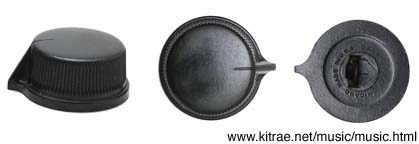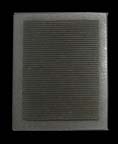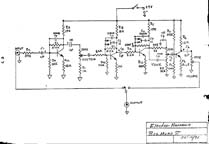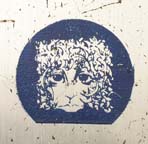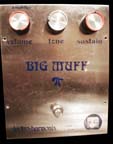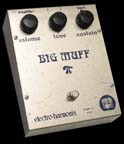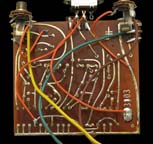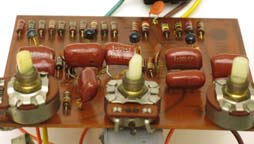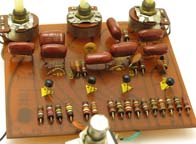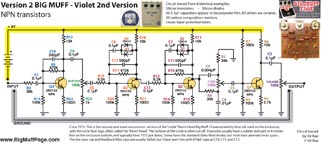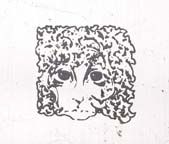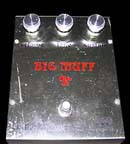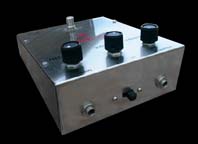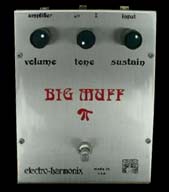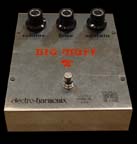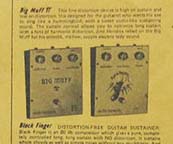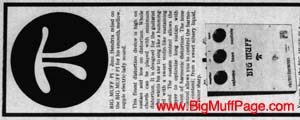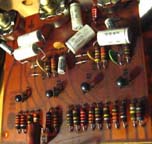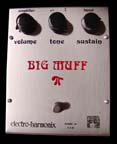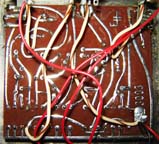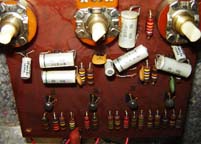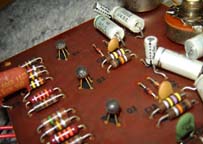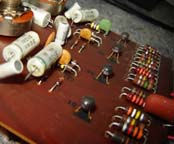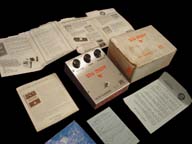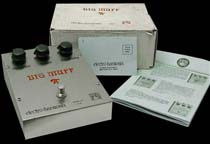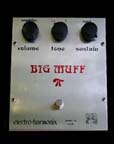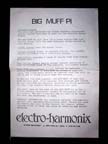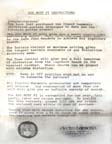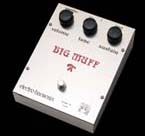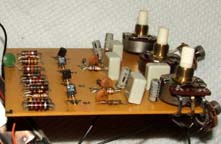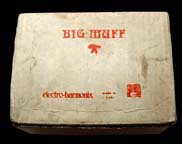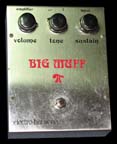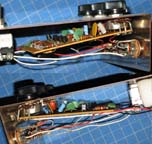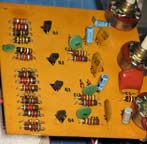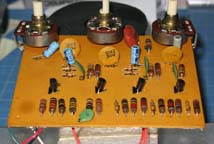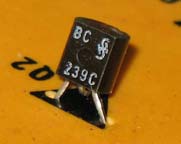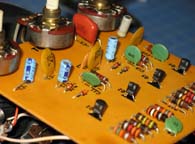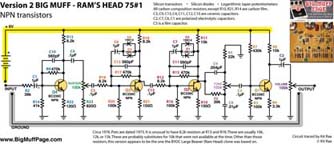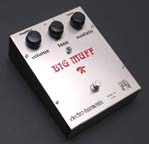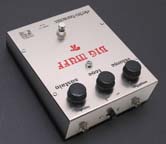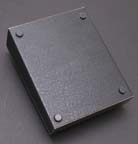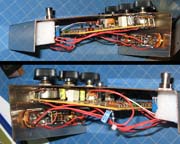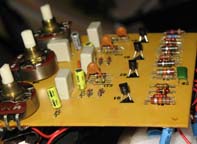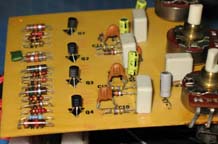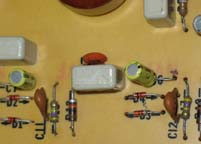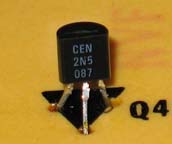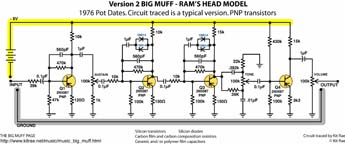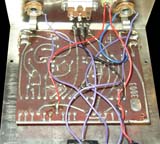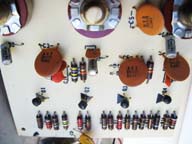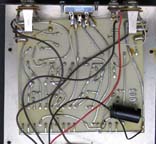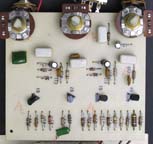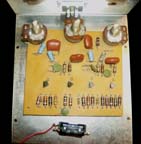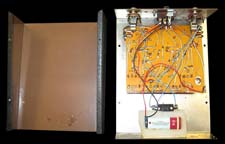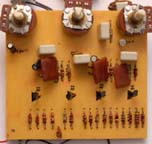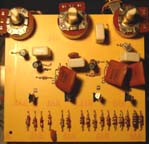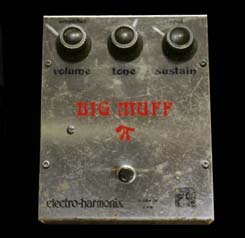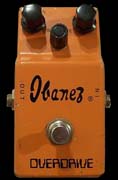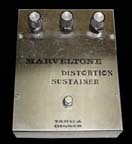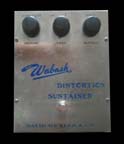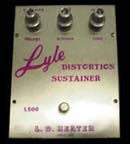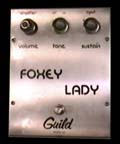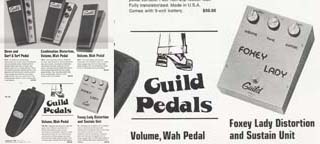THE BIG MUFF π - A HISTORY OF ALL VERSIONS - Part 1
Click on any Big Muff in the image below to go directly to that section
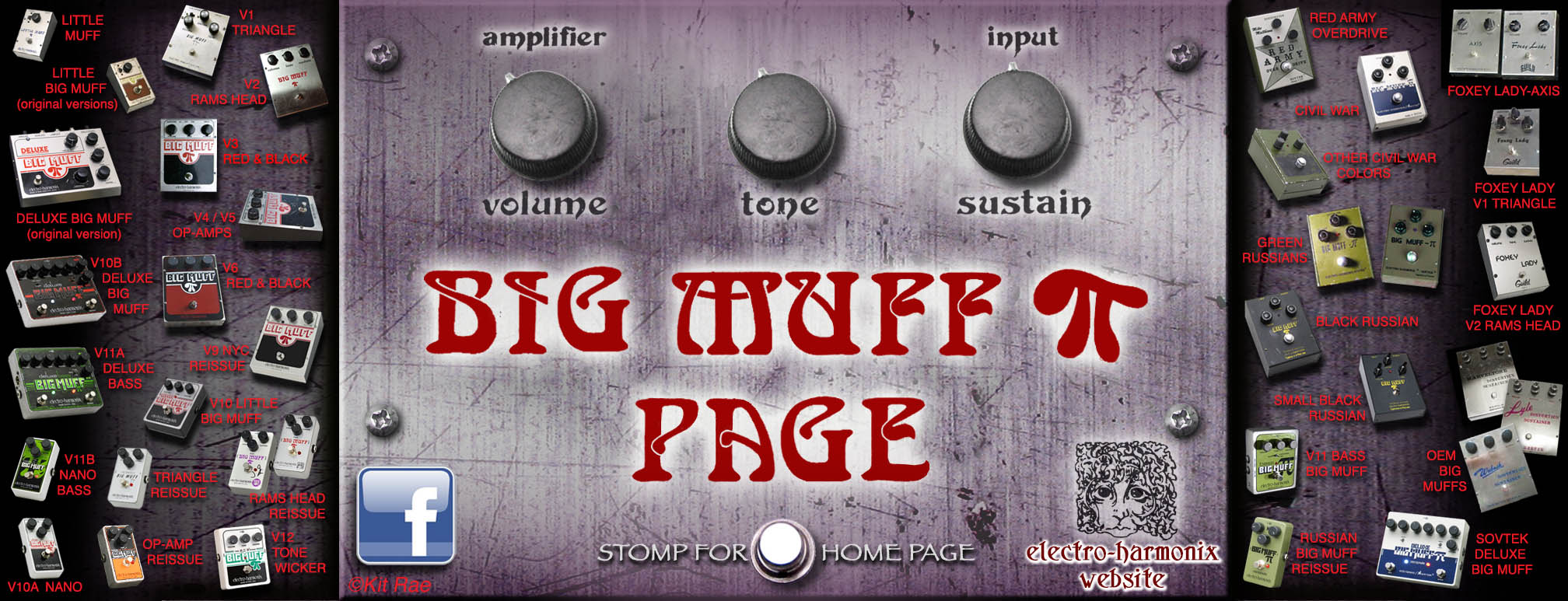
Last update February 2023. NOTE: This website is constantly updated as new information becomes available. Version, Edition, and Revision numbers listed here are not actual Electro-Harmonix identifiers. They are my categorizations, for identification purposes only. Permission required to repost any information from this site in any ebay listing. Website and contents ©Kit Rae.
THE JIMI HENDRIX BIG MUFF π MYSTERY
THE “RAM'S HEAD” BIG MUFF π - VERSION 2
Circa 1973-1977 (Pots typically date as early as 1972 and as late as 1977)
Model Number: EH3003
Circuit Designer: Bob Myer with Mike Matthews
Circuit Variants: Approximately 20
Edition Versions: 3 - First edition manufactured circa 1973 (square face logo, no OFF graphic), second edition (round face logo, no OFF graphic) circa 1974, third circa 1975 (square face logo and both ON/OFF graphic)
True Bypass: No
Power Supply: Current draw approximately 3 mA. 9V battery only, or use a 9V battery snap adapter like the 1 Spot CBAT and connect to a standard negative center power supply like the Boss PSA120T, 120S, or 1 Spot 9V AC Adapter. Note some V2 Big Muffs are positive ground (PNP), so the power cannot be daisy chained with standard negtive tip ground pedals. See POWER section below for important adaptor and daisy chaining power requirements.
Enclosure Size: 6 7/8 " x 5 1/2" x 2 1/4"(short end) x 2"(long end) / 174mm x 138mm x 35mm(short end) x 57mm(long end)
Packaging: White corrugated cardboard box. Early packaging graphics were identical to the V1 Big Muff box. Later packaging copied the V2 enclosure graphics with red printing.
Place of Manufacture: Manhattan, New York, USA. 15 West 26th Street, New York, NY, 10010. EHX moved to 27 West 23rd Street around 1974.
Replacement Parts
E-H had progressed to using larger boxes for their pedals around 1973 and the Big Muff was given an upgrade to this box for Version 2, and a new art nouveau-ish typface. It has come to be known as the "Ram's Head" version, based on the most common nickname. There were numerous versions of the V2 circuit, each with a slightly different sound. The most popular was the "violet" version. Early V2 Big Muffs shipped with a rubber skid pad attached to the bottom panel, similar to the Triangle Muff skid pad, but this was later changed to four rubber feet around 1974 or 1975. The list price was originally $39.95, but it could found for $32-29.95, or less, according to some original owners. Around 1974 the list price went up to $49.95 but some sellers were still as low as $29.95. It was the #1 best selling pedal for Electro-Harmonix in the 1970s until the Small Stone phaser, released around 1975, knocked it down to the #2 spot. The V2 was produced until around 1977 when the graphics were changed to the V3 look.
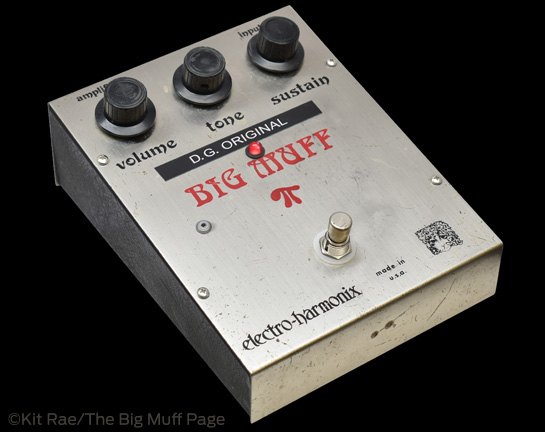
David Gilmour's 1974 Ram's Head Big Muff, his "DG ORIGINAL", included Fuzz Face knobs that were replacements
added in 1976 when Pete Cornish replaced the pots and added an internal buffer. The foot switch has also been
replaced a few times. The red LED is also an after-market modification and an internal buffer in 1976.
David Gilmour of Pink Floyd got into using the Ram's Head Big Muff in the late 1970s and recorded some of the most famous solos in Rock and Roll with it, including the Comfortably Numb solos. His 1974 original Big Muff has been used at various times in his live rigs for over 40 years. Ernie Isley of the Isly Brothers used a Ram's Head Big Muff throughout much of the 1970s. One can be seen in the photo below. J Mascis of Dinosaur jr is another well known user.
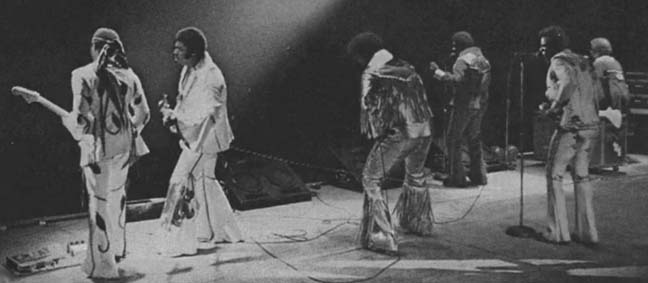
GRAPHICS - I have noted three editions, loosely differentiated by graphics colors and face graphic. The most notable change for the Version 2 Big Muff was the addition of the strange little elfin like face with ivy-like hair that was added to the lower right corner of the front panel. This face graphic has led to the common nickname, “Ram's Head” Big Muff, or Ram Head. I have also heard numerous other nicknames, such as lambs head, face, sheeps face, and medusa head Big Muff. The face does not look at all like ram or sheep to me, but Ram's Head seems to have become the most common nickname for this version, so that is the name I use. The face graphic was printed in a box shape and also in a round shape on some V2 models, as you can see in the photos below. This now iconic graphic was used in Electro-Harmonix advertising and packaging throughout the 1970s, and continues to be used to this day. A person on one gear forum noted that the face resembles Mike Matthews! A graphic designer created the design in the early 1970's, and when Mike Matthews saw it he decided to use it as the company logo graphic.
"I liked it so I just used it as a logo, something to attract attention to the ad. It didn't have any special meaning other than I thought it was distinctive." - Mike Matthews
- The plain font used on the Version 1 Big Muff was changed to the more stylish Arnold Böcklin typeface, created by by Schriftgiesserei Otto Weisert foundry. This font was also used on several other EHX pedals from this era. Sort of an art nouveau font, this typeface was created in 1904, named after the Swiss surrealist painter Arnold Böcklin, who died in 1901. It was a very popular in the 1960s and '70s, and is very much associated with the early Electro-Harmonix look.
- First Edition - Early production used the square face logo. BIG MUFF and the pi symbol were usually printed in red, with everything else in black. The word ON was in the graphics, but no OFF for the first editions with red and black ink. The missing OFF was also common to other EHX pedals from this time, like the Black Finger. These alwasy had a rubber skid pad on the bottom.
- Second Edition changed the square face logo to the circle face logo. Some people have claimed the violet color version was actually the first V2 edition but information I have collected (original owner buy dates, pot codes, pcb boards, component types, knob types) indicate otherwise. Graphics were usually all one color and came in the following variants:
- all blue (nicknamed the Violet Ram's head)
- all purple (nicknamed the Violet Ram's head)
- all red
- all black
- BIG MUFF and the pi symbol printed in red. Everything else in black, including the circle face
- There is a 'mistake' version of the all blue graphics with the BIG in BIG MUFF spelled BJG. I have only seen a few of these, so I do not know how rare that version is.
- "VIOLET" Ram's Head Second Version - There was also another 'mistake' version of the all blue graphic with the bottom of the circle face logo chopped off flat. I am calling that one the Violet Ram's Head "second version" since the circuit is not identical, and a significant production run was made with the graphics like this. It had both ON and OFF in the graphics. I suspect these were some of the last Big Muffs made using the blue ink, as they can be found with both skid pad and 4 rubber feet on the bottom that became the standard throughout the rest of the 1970s.
- Third Edition - Around 1974-1975 the word OFF was added to the graphics, the colors transistioned back to the common red and black, and the face logo returned the the square box. Production with OFF in the graphics almost always had four rubber feet on the bottom rather than the skid pad, but I have seen some with the skid pad.
CONTROLS / KNOBS- The on/off switch was moved to the back panel for this version and the only power option was the 9V battery. The foot switch is a Carling SPDT. The three control knobs were now in a line across the top. As on the V1, none of the three control knobs on the V2 start at zero in the same place. This is due to the potentiometers (pots) being mounted to the circuit board with the leads wrapping over the edges of the board - one over the left side, one over the top, and one over the right side. Technically the tone pot now had treble and bass in reverse of the V1 Big Muff, but since the pot was now mounted upside down on the pcb, the treble and bass orientation appears the same as the V1. Pots had plastic D shafts. The first V2 Big Muffs had tall, skinny "reactor tower" shaped silver knobs that Electro-Harmonix also used for the Marveltone and Lyle OEM versions of the Big Muff, the last V1 Big Muffs, and other E-H pedals. There were three version of the reactor tower knobs, pictured below. A variety of other knob types were used as E-H searched for a knob style that they could use for all pedals. Around 1975 E-H settled on the common Daka-Ware black Bakelite type, with d-shafts, ridged sides, and protruding pointer. Most of those were made by Davies Molding of Chicago. Some of the alternate knobs found on V2s were purchased for use on the OEM versions, and others were used by E-H when they were trying to find consistant knobs for production before settling on the black Davies Molding knobs. Many of the odd knobs are thought to be after market replacements, but they are usually original.
ENCLOSURE - Similar 2-piece sheet metal enclosure as the V1, but in a larger size. First prodcution had a ridged rubber skid pad glued to the bottom as on the V1, changing to four rubber feet areound 1974-75.
CIRCUIT BOARD, COMPONENTS and the VIOLET V2 - All circuit boards were marked with the number 3003 and a stylized “EH” symbol. As with the V1 Big Muff, circuit board component types and values for the V2 frequently changed during production. At first glance there appears to be very little consistency in component types and values from one V2 circuit to another, leading one to believe production was sloppy, with parts seemingly picked at random. In reality, they were anything but random. There were at least 20 different circuit variants, each following a set schematic, and each repeated in production by the thousands. I call these different schematics "variants". For an explanation as to why there were so many different schematics used, see the V1 entry here. Among these, several common variants of the circuit can be easily identified. One of the first was the "47" version, from around 1973, nicknamed for the .47µF, .047µF, and 470pF caps and 470k resistors used. The "73" Ram's Head variant followed that. Next was the "Violet" Ram's Head variant in 1973, probably the most common version of the V2 circuit, which was followed by a less common Violet second version. The "White Can" variant was the next most common, circa 1974, followed by the common white box cap variants, circa 1975-76. You can read more details about the workings of the circuit here. Schematics for many of the circuit variants are posted here.
- Some V2 Big Muffs were made with silicon NPN (negative ground) button top shaped (TO106 package) transistors marked with FS36999 like the previous V1 Big Muffs. The FS36999 are actually 2N5133 transistors that another company (not by EHX) had Fairchild custom mark with their own FS36999 house number (see the V1 section). Many early Big Muffs had both 2N5133 and FS36999 transistors on the same circuit board, and sometimes both ID codes were marked on the same transistor. The non stock number marking was likely used to confuse counterfeiters, although it is unlikely that E-H ordered this custom mark, but rather purchased them from a supplier already marked this way. Several other transistors were also used, including: PNP (positive ground) FS3700 button top shaped, NPN BC239 half cylinder shaped (TO92 package), PNP 2N5087 (TO92 package) and NPN 2N5088 (TO92 package) transistors.
- Early V2 circuits used mostly ceramic and polymer film capacitors, but around 1974 polarized electrolytic caps were used along with ceramic and film caps. There is also a variant with all ceramic caps, circa 1974, and another circa 1975.
- Resistors were almost always carbon composition type, but smaller carbon film type began to be used on the later V2s in 1975/76. Often you will see the two types mixed.
- Diodes were silicon type, but most were unmarked (black band only), or gray/black/silver bands. A few were marked 125, and some 1975-76 Big Muffs had 1N925 diodes. Based on measurements, and the diodes used in later Big Muff versions, it is assumed the unmarked diodes were 1N914/1N4148 equivalents.
- Circuit board colors varied through the production, beginning with yellow, tan, then brown, white, dark brown-red, then back to yellow, and light brown.
POWER - Power is from a 9v battery only. You can also use a 9V battery snap adapter like the 1 Spot CBAT and connect to a standard power supply with a negative center barrel type jack, like the Boss PSA120T, 120S, or 1 Spot 9V AC Adapter. Note while most V2 Big Muffs are negative ground (NPN) circuits, some are positive ground (PNP). The power of a PNP circuit cannot be daisy chained with standard NPN pedals with a negative center plug. The common ground on NPN pedals is negative, so if you daisy chain power to a PNP positive ground pedal it will short out the power. See the TRANSISTORS entry above to find out if your pedal is PNP or NPN. If you intend to add a standard 9V power jack that works with standard negative tip power supplies, you can find out where to wire the + and - wires by looking at the wiring diagram for your version, or simply follow the red(+) and black (-) wires from the battery snap.
CLONES OR SIMILAR PEDALS - Note that since there were numerous versions of the real Big Muff V1 and V2 circuits there is no one version to clone, and some clones have modifications to the Muff circuit design. For those reasons most of these clones sound different from each other. Jordan Creator made by Jordan circa 1971, Mirano EF-1 Exiting Fuzz (Japan) circa 1971, Sekova Big Muff (Japan), Maccanbell Big Muff Sustainar (Japan), The Supa Tonebender made by Sola Sound of Britian circa 1973, Elk Super Fuzz Sustainer (Japan), Elk Big Muff Sustainer (Japan), Electro Sound Big Muff Sustainer (Japan), Big Mag Sustainer (Japan), Hohner MF-50 Tri-Dirty Booster from around 1976 (USA), Ibanez OD-850 Overdrive/Maxon OD-801(third version, Japan) circa 1979, Ibanez 60s Fuzz - SF-5 metal case/FZ-5 plastic case (Japan) circa 1990. Some modern clones or alternatives are the D.A.M. Ram's Head (UK), Ronsound Hairpie '75 (USA), BYOC Large Beaver (USA), Stomp Under Foot Ram's Head and Violet Ram's Head (USA), Top Tone Drivegate DG-1 (Brazil), Sweet Sound Pi Face (minus the tone control), Tym Guitars Big Mudd (Australia), Basic Audio Ram/Triangle Big Muff, Electronic Orange Pig Hoof (Czechoslovakia), Dice Works Muff Diver (USA), MJM Foxy Fuzz (USA), Skreddy ? Lady and Ernie (USA). The Skreddy Mayo, Mayonniase, Pink Flesh, Pig Mine, are all similar, but based around V1 component values. The Pete Cornish P-1 (UK) is one of the best Ram's Head replica's. See DiscoFreq's Effects Database for a thorough listing of all the Big Muff clones and variants throughout the years.
THE SOUND - As with the V1 "Triangle" Big Muff, it should be clearly stated that there is no 'one' V2 "Ram's Head" Big Muff tone. There are several. Basically the V2 was just a larger enclosure for the V1, and the ever-changing component values meant the sound changed from one circuit variant production run to the next. Listen to the Animals and The Wall alnums by Pink Floyd for examples of solo tones using this pedal, and listen to Dinosaur Jr. for examples of the raw lead tone and wall-of-sound use of this pedal. The V1 and V2 (Ram's Head) Big Muffs both spanned a similar range of circuit variants, so in that regard, some V1s sound the same as some V2s, but many do not.
I am describing some typical attributes here, based on dozens of examples I have played or own. The mid range was very "scooped", or removed, making the sound get lost in a band mix when playing live with certain amps and playing certain types of music. I have found that there is more of mids scoop on many late model V2s versus the more typical V1 Big Muff circuits. Sustain/gain was exceptional on most V2s, although there were a few circuit variants that had less gain than the others. Some circuit variants had fat low end bass frequencies, sometimes flabby sounding. In general most had a fairly tight and controllable low end. That bottom end creates a huge, thunderous sound through a tube amp. The bass and treble frequencies varied slightly from one V2 circuit variant to another, and there are a few variants were they varied quite a bit, as did the gain. In the extreme ranges you may find some that are very high gain with a more gritty/fuzzy and deeply mid-scooped tone, and others that have a smoother, more articulate sound, with less mid-scoop, and less gain. The "violet" circuit variant would be an example of the latter, and it was one of the most common circuit variants used in the early 1970s V2s.
This wide variety in sounds is one reason V1 and V2 Big Muffs are so collectible. You can have two different V2 circuit variants that sound roughly the same through an amp. Then you blend both with an overdrive and you find one sounds very different than the other. Or blend both with a modulation effect like an Electric Mistress and one may filter the modulation frequencies differently than the other. You may even find that two different V2 circuits sound the same through one amp, but different through another amp.
Then there are the tone circuit differences. Two V1s, each with a different circuit variant inside, may sound nearly identical when both tone knobs set the at 12:00, for example. Dial both into the bass range and one may sound muddy and useless, where the other sounds warm and articulate. Or dial both to the treble side and one sounds harsh and trebly, but bright and compressed in the other. V1 and V2 Big Muffs are like that.
![]() V2 Sound Clip 1 - Pigs outro solo - Strat with Seymour Duncan SSL-5 bridge pickup, '73 Violet Ram's Head, Deluxe Electic Mistress (mixed 50%) , Future Factory Delay, Ambi Space Plate Reverb, into a Reeves Custom 50
V2 Sound Clip 1 - Pigs outro solo - Strat with Seymour Duncan SSL-5 bridge pickup, '73 Violet Ram's Head, Deluxe Electic Mistress (mixed 50%) , Future Factory Delay, Ambi Space Plate Reverb, into a Reeves Custom 50
![]() V2 Sound Clip 3 - In Any Tongue solo - Strat with Seymour Duncan EMG-SA pickups, '73 Violet Ram's Head, Deluxe Electic Mistress, Future Factory Delay, Ambi Space Plate Reverb, into a Fender 59 Bassman and a yamaha RA-200 rotary speaker amp.
V2 Sound Clip 3 - In Any Tongue solo - Strat with Seymour Duncan EMG-SA pickups, '73 Violet Ram's Head, Deluxe Electic Mistress, Future Factory Delay, Ambi Space Plate Reverb, into a Fender 59 Bassman and a yamaha RA-200 rotary speaker amp.
V2 Sound Clip 4 - Comfortably Numb second solo - Played with a 2008 American Standard Strat, Seymour Duncan SSL-5 bridge pickup -> Boss CS-2 compressor -> Muff ->TC Nova Delay -> Boss CE-2 chorus -> Fender Twin.
CLICK A PHOTO TO ENLARGE
Shown above (left to right) - A 1973 Triangle V1 Big Muff with "reactor tower" knobs, one of the last produced in the small enclosure, and the larger first edition V2 Big Muff enclosure that replaced it. The larger pckaging retained the same graphics as the Triangle Big Muff. In the middle is a 1974 Electro-Harmonix magazine ad (click to enlarge) showing the new, larger V2 enclosure with the same knobs, all in line. These knobs were also used on several other Electro-Harmonix pedals, including the Black Finger sustainer. To the right is a warranty card packed with the V2, showing the 15 West 26th St address.
Shown above - Two V2 "Ram's Head" Big Muffs with the new enclosure, new Arnold Böcklin typeface, pots dated 1973, and the new "47" circuit, manufactured circa 1973. The "reactor tower" knobs shown are the first version, with the indicator dot on the front, identical to the knobs used on the last V1 Big Muffs (shown below) just prior to changing to the larger V2 enclosure. Knobs on bottom left are after market replacements. Many other production knobs were used, including the common black Daka ware knobs. This rare circuit is nicknamed the "47" version. It features unusual .47µF and .047µf input, clipping, and coupling caps (typically .1µF or 1µF), 470pF feedback filter caps, and 470k feedback resistors. The word ON is shown in the graphics but no OFF, typical for the early V2 Big Muffs. I have seen several examples with this exact circuit. Component types sometimes vary, but all have the yellow pcb's marke NVF, and same round green .47pF capacitors. The NPN ransistors were marked FS36999 327, or 2N5133 301. Those were likely the exact same transistor. (thanks to G Smith for the pix on top, and O Joseph for two circuit pix onbottom).
Shown above - A V2 Rams' Head Big Muff with the same "47" circtuit shown above. It was purchased new in 1973 or 1974. The battery clip has been replaced, but according to the original owner the Muff shipped new with these unique knobs from E-H (thanks to John C for the pix). On the right is another V2 with the same knobs, both missing the word OFF from the graphics. EH was still searching for the right knobs for their pedals, and in the process tried many different types.
Shown above - All V2 Big Muffs have the exact same circuit board, marked with the numbers 3003 and a stylized EH logo. They came in a variety of colors. Boards made in the first year of production have printed manufacturer markings like NVF and MC7. Many of these early V2's used the mysterious NPN FS36999 transistors (#FS36999 327), which were actually Fairchild Semiconductor 2N5133 transistors (#2N5133 301) with a special mark. These mysterious transistors are considered the holy grail of the Big Muff universe. Probably too much emphasis is placed on transistors, as the capacitor and resistor values are actually what sculpts the sound.
Shown above - A V2 "Ram's Head" Big Muff with pots dated 1973, NPN FS36999 transistors, and production "reactor tower" shaped knobs. Commonly called the "73" Ram's Head. Note this version of the knobs does not have the indicator dot. This is likely the second circuit version for the V2. PCB board were yellow on the populated side with NVF markings, just like the "47" circuit boards shown above. The circuit includes carbon composition resistors, Silicon diodes, and Polyester film caps. Most Big Muffs from this time have fat polyester film caps like this, in black or the more common red-brown color shown below. The more common version of this circuit had .12µF caps rather than .1µF shown here.
Shown above - A few more early V2 Rams' Head Big Muffs circa 1972-73 with "reactor tower" knobs, black Daka Ware knobs, and other prodcution knob types. Knobs on the right are likely after market knobs. The circuit is the same as the 1973 schematic shown above, but the .1µf caps are .12µf here. This same circuit was used in the Marveltone and Lyle OEM (original equipment manufacturer) versions made by Electro-Harmonix. Only the word ON is shown the graphics, but no OFF. The OFF was added to the graphics much later. All have rubber skid pads on the bottom. Note there were three versions of the reactor tower knobs used in prodcution.
Shown above (left to right) - "Reactor tower" shaped silver knobs used around 1972-74 on V1 and V2 Big Muffs. Also used on the Marveltone and Lyle OEM versions, as well as other E-H pedals like the Bad Stone, Frequency Analyzer, Black Finger, and the E-H made Guild Foxey Lady. The were three types, as shown above - indicator dot top, plain top, and indicator line top.
Shown above - December 1974 Guitar Player ad. Click to see the full page ad.
Shown above (left to right) - Several “Violet” V2 Ram's Head Big Muffs with the new circle face logo graphic. These were made with a wide variety of different production knobs and were printed with one of four different ink colors. These same knobs were are also used on many other E-H pedals from the mid 1970s. The word ON is in the graphics, but no OFF, and they always had a rubber skid pad on the bottom. The pots are almost always dated 1973 but the date on the example shown on the left with purple graphics is February 1975, making it hard to determine when these were actually made (thanks to Scott for the pix). In the middle are examples of each of the four ink colors ( purple, red, blue, and black) used by E-H, from the collection of J Mascis (photo by J Mascis). I have seen one 'mistake' version with BIG spelled BJG.
Shown above - Another example of a "Violet" V2 showing the circuit. This was likely the fourth circuit version for the V2, and the most common version of the popular "Violet" schematic. These are considered among the best sounding and most desirable of the 1970's Big Muffs, and there were probably more of this circuit version made than any other. The rubber skid pad on bottom is a feature that dates this pedal to around 1973-1974. Knobs are actual production. The word ON is in the graphics, but no OFF. (Thanks to Steven C for the pix).
Shown above - More “Violet” V2 Ram's Head Big Muffs with the round face graphic, and the word ON in the graphics, but no OFF. Note the EHX Black Finger pedal with similar ink color, same fonts, and missing OFF. Silver knobs on the examples in the middle are actual production knobs. Circuit shown on the top right follows the popular "Violet" Ram's Head schematic. Most have 1973 pots dates.
Shown above - More “Violet” V2 Ram's Head Big Muffs with the round face graphic. The two on the right have a mistake in name graphic, using a letter J instead of an I in BIG.
Shown above - Common Daka-Ware knobs Electro-Harmonix used on V2 and V3 Big Muffs, and many other E-H pedals in the mid-late 1970s, manufactured by Davies Molding of Chicago. The three potentiometers were mounted in different orientations from each other, just like the V1 "triangle" Big Muffs.
Shown above - Bottom of an early V2 Ram's Head Big Muffs showing the large rubber skid pad, similar to the Triangle Big Muff skid pad. It was changed to four rubber feet around 1974-75, although the skid pad occasionally appeared on some later versions of the Big Muff in the late 1970s. Shown on the right is a V2 Big Muff factory schematic dated October 15th, 1975. A slightly squished version of this schematic has been around for 20 years or so, but this one appears to be a photocopy of the original (thanks to Bob for the scan)
Shown above (left to right) - Second version of the "Violet" Big Muff circuit, with 2N5133 transistors, circa 1973-1974. The circuit had a slightly different tone section and larger input and collector resistors, but sounded very similar to the first violet version. The graphics often fetaured the round face graphic clipped at the bottom. Early version had no OFF in the graphics a rubber skid pad on the bottom, and later version had both ON and OFF in the graphics and either a skid pad or four rubber feet on the bottom. The pots are almost always dated 1973.
Shown above - Various V2 Ram's Head Big Muffs with the "square" face and the word OFF added to the graphics. The silver knobs on the V2 shown on the left were actual production knobs that were also seen on V1 Big Muffs. The four Muffs on the right likely have after market replacement knobs. The one on the far right is mounted with knobs similar to the Dallas Arbiter Fuzz Face knobs from this period, similar to one David Gilmour has used on his touring pedal boards
Shown above - An Electro-Harmonox box stuffer, circa 1974, a magazine ad for the V2 Big Muff, from December 1975, and an original price sticker circa 1974. Note the list price increased from $39.95 to $49.95, but these were often sold $10-20 below list.
Shown above - Several V2 Ram's Head Big Muff circuit boards, nicknamed the "White Can" Ram's Head. This is likely the fifth circuit version for the V2. These are easily identified by the large white axial poly film caps. Pots are almost always dated 1974, NPN FS36999 transistors, 680pF filter caps, and similar .1 or .12uF film caps.
Shown above - Another V2 Ram's Head Big Muff "White Can"circuit with pots dated 1974, NPN FS36999 transistors, and large axial poly film caps. Component types and values nearly match White Can circuits shown above (thanks to Steel Warrior for the pix)
Shown above - V2 Ram's Head Big Muffs showing the the “square” shaped face graphic including both ON and OFF in the graphics, and the now common Daka-Ware knobs. Original packaging and paperwork. Note the packaging graphics changed from the old Triangle Big Muff box art to the art from the V2 Big Muff enclosure silk screen.
Shown above - V2 Ram's Head circuit boards with pots dated 1975, NPN 2N5088 transistors, and box film caps
Shown above - Some V2 Big Muffs from around 1975-76 have NPN 2N5088 transistors with color bars on the back side
Shown above - A V2 Ram's Head with typical Daka-Ware knobs and both ON and OFF in the graphics. Pots are dated 1975 and the circuit was made with NPN BC239 transistors. The circuit is nearly identical to the one used for the B.Y.O.C. Large Beaver (Ram's Head spec clone), and is a rather common circuit. This is a typical sounding V2.
Shown above - Another common tV2 Ram's Head circuit board, with pots dated 1976. This one uses rare PNP 2N5087 transistors rather than NPN. Note the components types vary slightly from the NPN BC239 example shown above, as as is the case with almost all V2 Big Muffs, but the value selection had become relatively consistent at this time. True bypass and LED were added by Kevin Russel of KSR Custom Shop. This is a particularly good sounding late model V2. The B.Y.O.C. Large Beaver (Ram's Head spec clone) is identical to this version, only with NPN transistors. This is a typical sounding V2.
Shown above - Various V2 Ram's Head circuit boards from 1973 to 1976, all with exactly the same 3003 PCB trace pattern. Note that the component types and values vary from Muff to Muff, making each sound slightly unique. Also note the positioning of the potentiometers which caused the three knobs to each start with zero in a different position from each other, common to all V2 Big Muffs
THE LEGENDARY DAVID GILMOUR AND HIS PINK FLOYD BIG MUFFS (article updated 2011) - A V2 "Ram's Head" Big Muff was reportedly the most used Big Muff by David Gilmour, both in Pink Floyd, and in his solo recordings. It was famously used on the legendary Comfortably Numb solos, from Pink Floyd's The Wall double album, as well as many other Gilmour Big Muff guitar solos throughout his career. David's gear tech, Phil Taylor, said he introduced David to the Big Muff in 1974, though I do not believe David started using one regularly until around 1975 or '76. Big Muffs appeared on Pink Floyd's Animals/In The Flesh tour, David Gilmour's first solo record and tour, The Wall studio recordings, The Wall tour, The Final Cut studio recordings, likely many of Gilmour's guest solos on other artists songs from the 1980s/'90s, the Momentary Lapse of Reason studio recordings and 1987 leg of the tour, the Division Bell studio recordings, the On an Island studio recordings, and the 2006 On an Island tour. According to Phil Taylor, this #1 Big Muff he gave David "has often been preferred for most things" over all others David owned. The #1 unit was likely his main recording Muff, though David owned several different V1 and V2 Big Muffs for use in the studio and touring. Out of the many Ram's Head Big Muffs I have played, one of the few that really stood out among the others to me, and that sounded exceptionally Gilmourish, was one with similar component values to the Violet Big Muff circuit. It has the typical huge, dark V2 sound, but a clarity unlike many typical Ram's Heads, and not too thick and bassy. Perhaps David's is similar to this? Of course, there was a very large variety of different component values used for these early Big Muff circuits, and many different V2 sounds, so we will never know what David's truly sounded like. READ MORE
CLICK HEAR TO READ THE FULL DAVID GILMOUR BIG MUFF ARTICLE
THE LEGENDARY J MASCIS AND HIS DINOSAUR JR. BIG MUFFS - J Mascis is most well known as the frontman and lead guitarist for Dinosaur Jr, among his many other bands. J's sound on the early Dinosaur albums came from a Deluxe Big Muff, but he later transitioned to using vintage version 1 and version 2 Big Muffs, often using one particular favorite Ram's Head Big Muff. That pedal became the backbone of Dinosaur Jr's live sound. From his thunderous, punk rock power chords and complex rhythm playing, to his volcanic and melodic solos, J is a master of the Big Muff as a distortion pedal. J also owns an extensive collection of vintage USA Big Muffs from the 1970s. READ MORE
CLICK HERE TO READ THE FULL J MASCIS BIG MUFF ARTICLE AND INTERVIEW
THE MAXON AND IBANEZ BIG MUFF CLONES
View the page about one of the early, and most popular Japanese versions of the Big Muff circuit, The Maxon D&S (Distortion & Sustainer) OD-801, and the Ibanez Overdrive OD-850, circa 1974.
MARVELTONE, WABASH, LYLE, AND EVEN MORE FOXEY LADY OEM BIG MUFFS
CONTINUE - MORE OF THE HISTORY OF THE BIG MUFF PART 1 (Vintage USA)
HISTORY OF THE BIG MUFF PART 2 (Russian)
HISTORY OF THE BIG MUFF PART 3 (modern USA)
© Kit Rae. This page is not authorized, affiliated, or associated with Electro Harmonix in any way
Website and contents ©2007 and ©2010 Kit Rae. All rights reserved. Linking to this website is allowed, but copying the text content is strictly prohibited without prior authorization. No part of this work may be reproduced, stored in a retrieval system, or transmitted in any other form, or by any means, electronic, mechanical, photocopying, recording, computer networking, or otherwise without prior permission in writing from the copyright holder(s).
Kit’s Secret Guitar, Gear, and Music Page
Guitar stuff, gear stuff, soundclips, videos, Gilmour/Pink Floyd stuff, photos and other goodies.
Contact: nasnandos @ kitrae.net (remove spaces around @ to email)
Copyright Kit Rae.
VISIT MY SWORDS, KNIVES and FANTASY ART WEBSITE www.kitrae.net
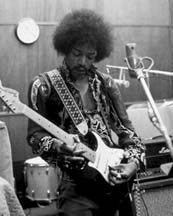

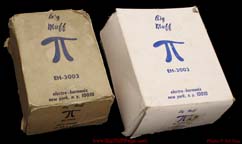
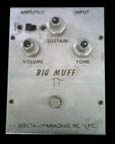
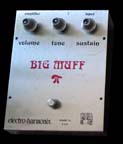
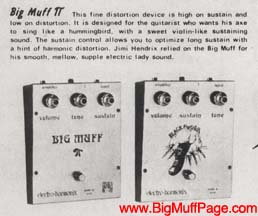
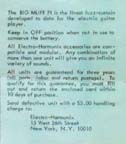
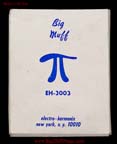
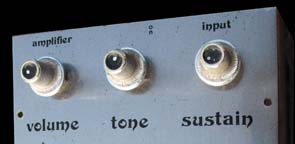
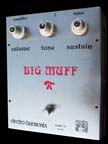


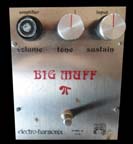
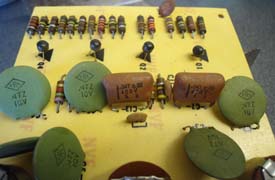
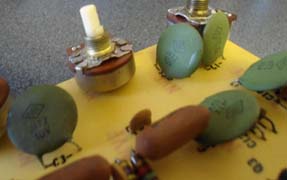
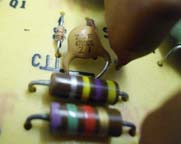

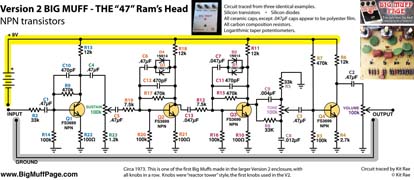
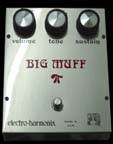
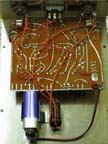

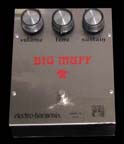
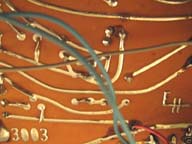
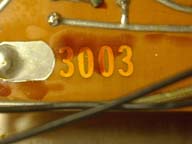
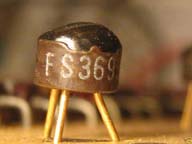
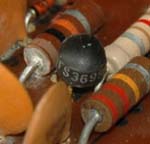
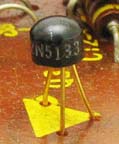
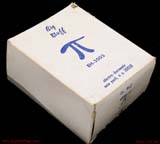
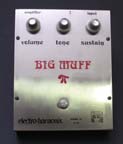
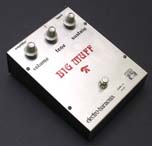
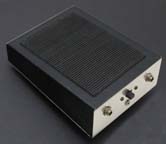
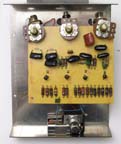
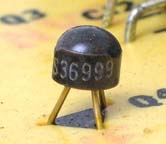
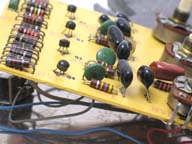
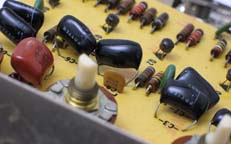

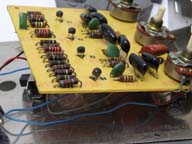
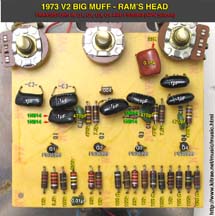 ..
..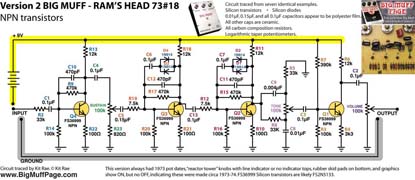
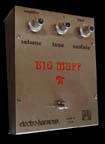
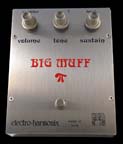
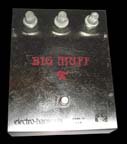
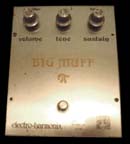
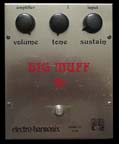


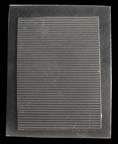
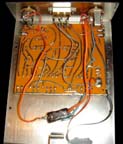
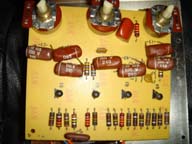


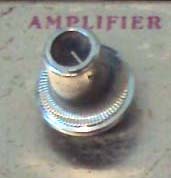

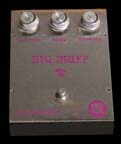
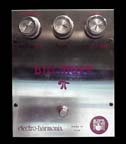

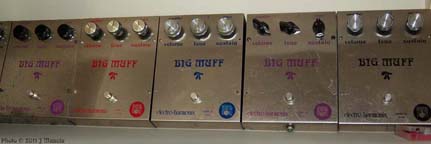
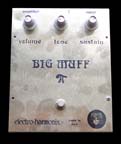
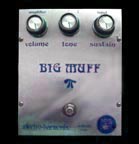
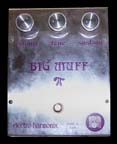
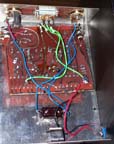
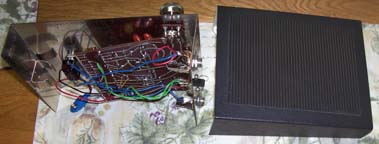

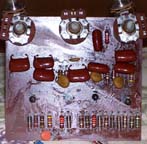
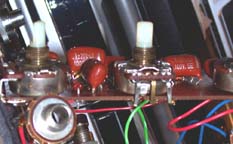
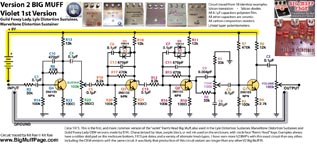
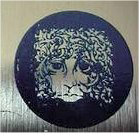

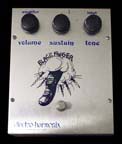
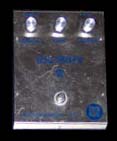
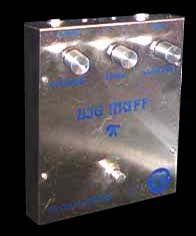
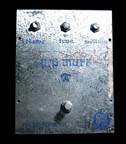
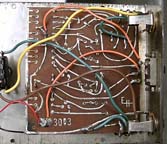
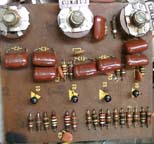
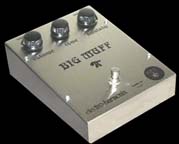
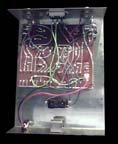
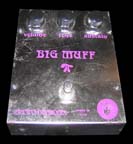
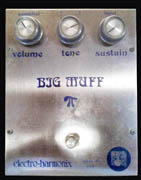
_sm.jpg)

